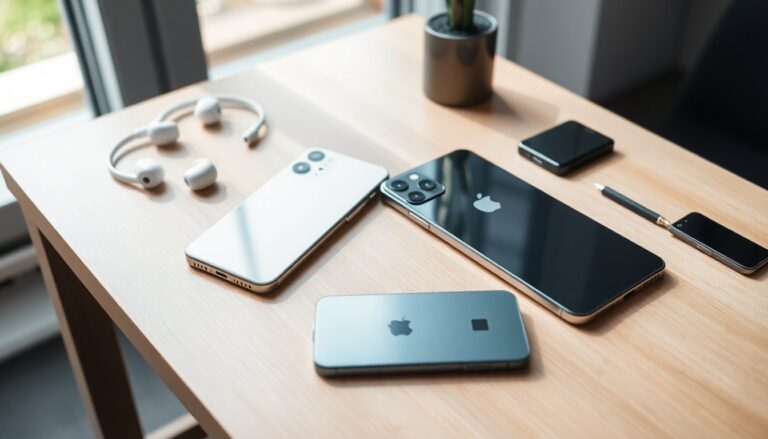Argomenti trattati
The smartphone rivalry intensifies
The competition among smartphone manufacturers continues to escalate. Recently, a question has emerged regarding Samsung’s upcoming Galaxy S26: Is it drawing inspiration from Apple’s iPhone 17? As both companies are recognized as leaders in the mobile industry, any similarities in design and features are likely to ignite discussions among technology enthusiasts and industry analysts.
Examining design influences
To explore the potential influences between these two giants, it is essential to analyze specific design elements and functionalities that may indicate a sharing of ideas. This examination will focus on various aspects such as aesthetics, hardware, and user interface, providing insight into whether Samsung is indeed following a similar trajectory to Apple.
Design and aesthetics: A closer look
The design of smartphones plays a crucial role in attracting potential buyers. The Galaxy S26 is expected to showcase a sleek, modern aesthetic similar to the minimalism of the iPhone 17. Both devices are anticipated to utilize premium materials, including glass and metal, enhancing their overall visual appeal.
Additionally, the configuration of the camera modules might reveal further design parallels. Should Samsung choose a camera layout akin to that of the iPhone 17, it may signify a strategic decision to embrace popular design trends. This emphasis on aesthetics extends beyond mere appearances; it highlights an industry-wide movement where manufacturers increasingly prioritize elegance alongside functionality.
Comparing hardware specifications
As design captures attention, the hardware specifications of the Galaxy S26 and iPhone 17 warrant close examination. Key components such as the processor, display, and battery life will reveal how these devices stack up against each other. Both models are expected to be equipped with advanced processors, with Samsung likely integrating its latest Exynos or Snapdragon chip, while Apple will depend on its proprietary A17 chip.
Display technology serves as another critical comparison point. Samsung has long been a leader in the market with its remarkable AMOLED displays, potentially giving the Galaxy S26 an edge in color vibrancy and contrast. However, should Apple unveil significant improvements to the iPhone 17’s display, it could pose a formidable challenge to Samsung’s dominance in this category.
User interface and software experience
The user interface (UI) and overall software experience are crucial in shaping consumer perceptions of smartphones. Samsung’s One UI has undergone significant development over the years, focusing on providing a seamless user experience. Should the Galaxy S26 feature design elements reminiscent of Apple’s iOS, it may generate considerable interest.
For example, if Samsung adopts a control center layout akin to that of the iPhone 17, it could indicate a deliberate effort to offer users a more familiar, streamlined interface. However, it is important to recognize that while the tech industry often sees shared ideas, each brand strives to preserve its unique identity through distinct software features and functionalities.
Market positioning and consumer perception
Market positioning plays a vital role in the competition between Apple and Samsung. Both companies have established distinct niches, cultivating loyal customer bases that value their unique offerings. Should the Galaxy S26 draw inspiration from the iPhone 17, it may influence consumer perceptions regarding Samsung’s dedication to innovation versus imitation.
In the technology sector, brand loyalty often hinges on the perception of originality. Consequently, Samsung faces the challenge of balancing user appeal with its brand identity. Highlighting its strengths, such as advanced display technology and superior battery life, could enable Samsung to set the Galaxy S26 apart from the iPhone 17, despite potential design similarities.
The evolving landscape of smartphone design
With the anticipated release of the Galaxy S26, industry experts are evaluating the extent of Apple’s influence on Samsung’s upcoming device. While aesthetic and functional similarities may emerge, both companies maintain distinct philosophies in their smartphone designs. Ultimately, consumer choices will shape the perception of these influences, guided by individual preferences and experiences with each brand.
In the fiercely competitive smartphone market, the interplay of innovation and inspiration remains critical. The Galaxy S26 is likely to incorporate trends initiated by the iPhone 17, yet Samsung faces the challenge of establishing its identity amidst these influences. The outcome will depend on how well Samsung can differentiate its offerings while remaining responsive to evolving consumer expectations.

